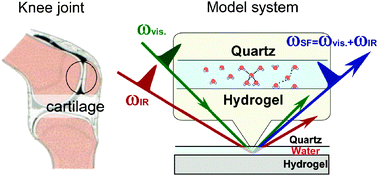Interfacial water structure at polymer gel/quartz interfaces investigated by sum frequency generation spectroscopy†
Abstract
Interfacial structures of

- This article is part of the themed collection: Water at interfaces
* Corresponding authors
a
Physical Chemistry Laboratory, Division of Chemistry, Graduate School of Science, Hokkaido University, Sapporo, Japan
E-mail:
uosaki@pcl.sci.hokudai.ac.jp
b Laboratory of Soft and Wet Matter, Division of Biological Science, Graduate School of Science, Hokkaido University, Sapporo, Japan
c Molecular & Informative Life Science Unit, RIKEN, Hirosawa 2-1, Wako, Saitama, Japan
Interfacial structures of

 Please wait while we load your content...
Something went wrong. Try again?
Please wait while we load your content...
Something went wrong. Try again?
H. Noguchi, M. Hiroshi, T. Tominaga, J. Ping Gong, Y. Osada and K. Uosaki, Phys. Chem. Chem. Phys., 2008, 10, 4987 DOI: 10.1039/B807297N
To request permission to reproduce material from this article, please go to the Copyright Clearance Center request page.
If you are an author contributing to an RSC publication, you do not need to request permission provided correct acknowledgement is given.
If you are the author of this article, you do not need to request permission to reproduce figures and diagrams provided correct acknowledgement is given. If you want to reproduce the whole article in a third-party publication (excluding your thesis/dissertation for which permission is not required) please go to the Copyright Clearance Center request page.
Read more about how to correctly acknowledge RSC content.
 Fetching data from CrossRef.
Fetching data from CrossRef.
This may take some time to load.
Loading related content
